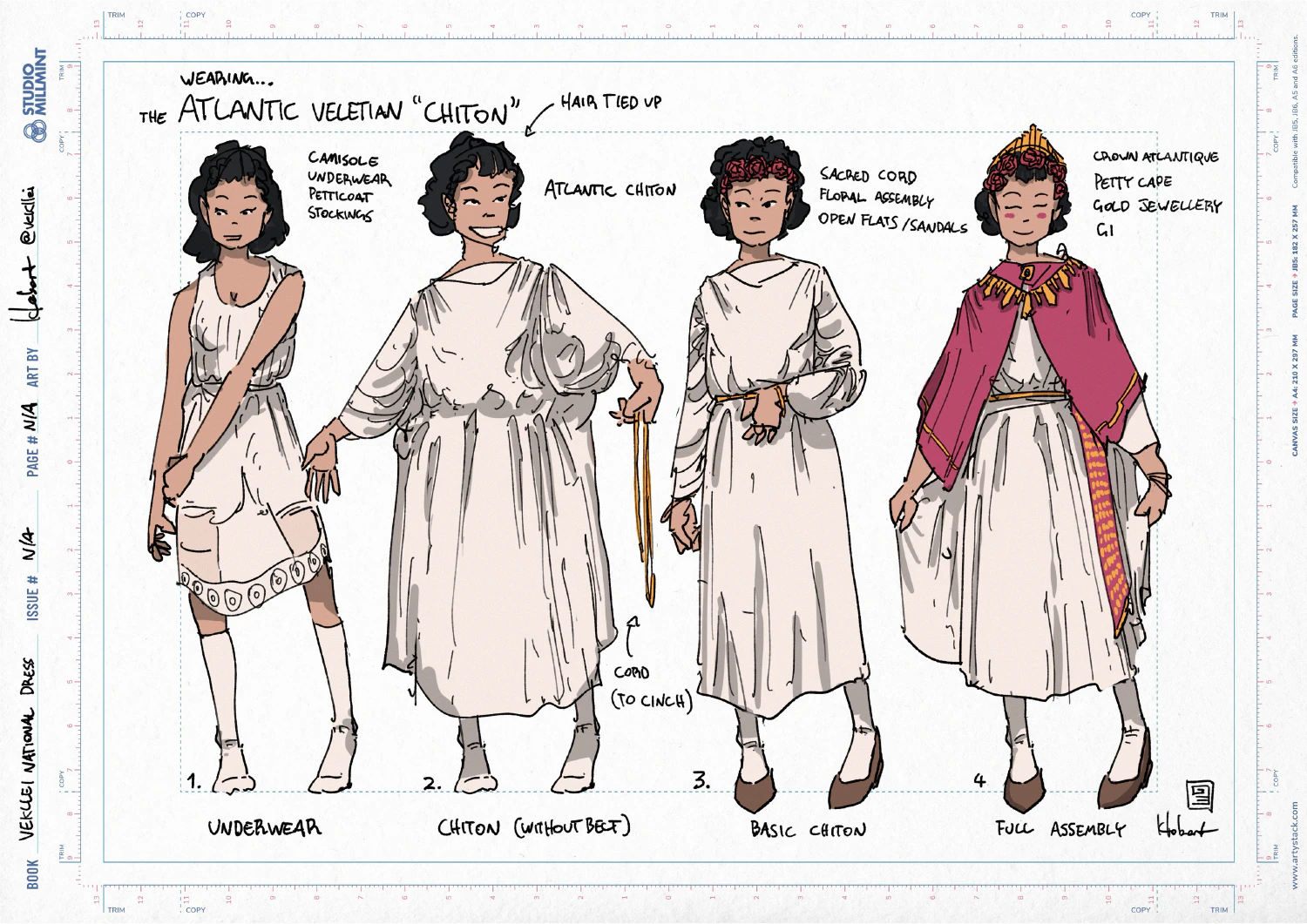NEW Story: Police Armoured Car
The Veletian Chiton

As a union of Atlantic communities, Vekllei has no single culture and consequently no single national dress. It does, however, have a national personification: Veletia, a historic illustration of pan-Atlanticism who today makes up one of “six sisters” which represent the Commonwealth in total. The “sisters” are not in fact six seperate characters but are different forms of the same figure; homoousion manifestations of a single national spirit.
Because of this, Veletia is closely associated with Vekllei society and the civic commons, and unity and transcultural commonhoods are strongly emphasised by the Commonwealth. As such, Veletia’s common appearance inspires a de facto national dress, which varies between constituents but has the same basic elements.
The example above demonstrates Oslola culture, hence the Gi and Petty Cape. In Vekllei’s Caribbean and mid-Atlantic republics, the outfit is modified for climate, shortening the stockings, using lighter materials and dispensing with the cape. The main dress most closely resembles a chiton, a kind of historic garment common in Doric and Ionian Greek history. You’ll see Greek-inspired names, styles and features throughout Vekllei, which might imply a grandiose national self-identity, but is more likely a means of avoiding emphasis of any one culture within the diverse country.
Like most Vekllei forms of dress, it is heavily accessorised and flexible to cultural tastes. Dress in Vekllei is concerned with commonhoods rather than differences, and so it is very common to change aspects or add items to reflect different cultures, most commonly regional patterns, colours and jewellery. The Veletian dress is most often seen where Vekllei republics meet, as an extension of the Commonwealth identity – particularly holidays, celebrations and meetings. It is worn as a kind of formal dress for certain school and business occasions.
It is also, of course, a symbol of Vekllei’s unique inwardness, living politics and level of social control. Like Commonwealth culture, Veletian national dress is at its roots artificial, informed by historic political rather than cultural traditions. But as with other aspects of the Commonwealth idea, once it is lived, worn, spoken and repeated by ordinary people, it becomes real and takes on a life of its own. It is an identity by consent, and part of the shared Vekllei project – a democracy not just in politics but in culture, traditions and aspirations.